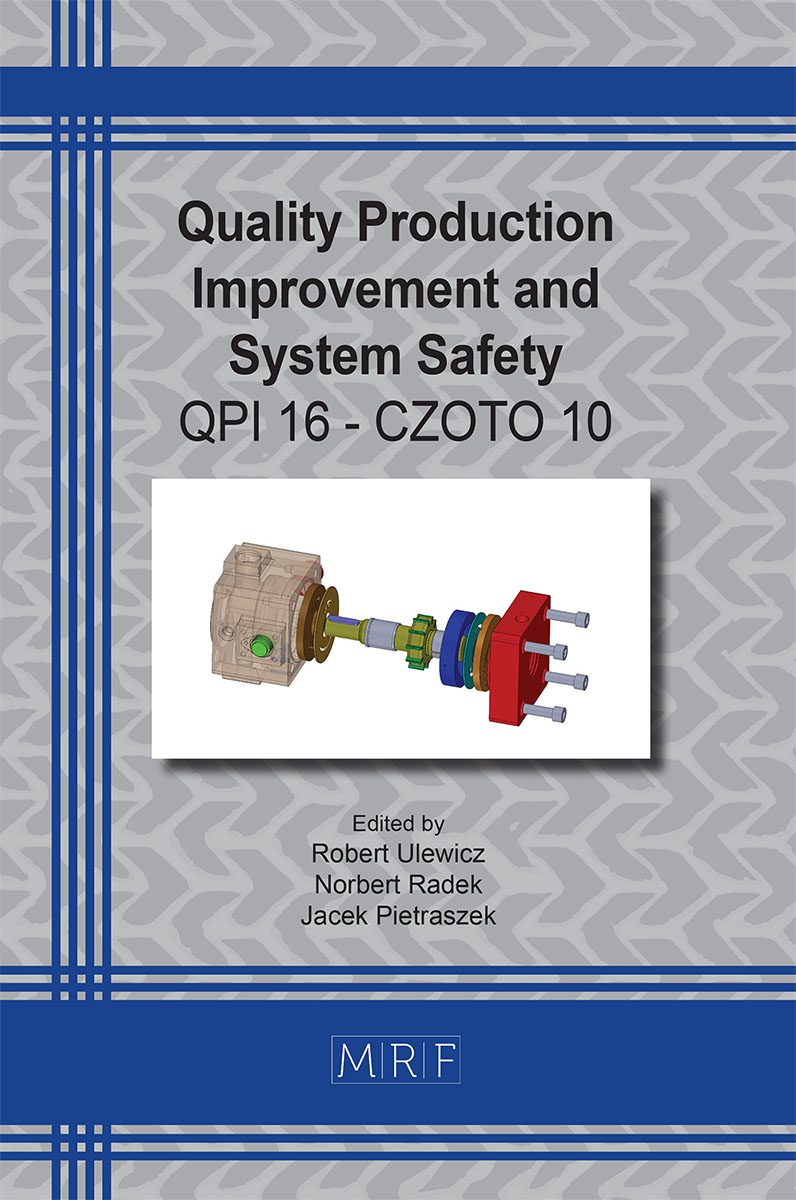Impact of Increased Iron Content and Manganese Addition on Intermetallic Phases and Fatigue Resistance of AlSi7Mg0.6 Secondary Alloy
MIKOLAJČÍK Martin, TILLOVÁ Eva, KUCHARIKOVÁ Lenka, CHALUPOVÁ Mária
download PDFAbstract. One of the most often utilized metals in a variety of industries is aluminium alloy. Secondary aluminium alloys have drawn a lot of interest in recent years. Scrap aluminium may be recycled, which is good for the environment. In addition, compared to primary aluminium, it produces at a lower cost due to its lower energy requirement. Because it adversely affects their characteristics, secondary aluminium alloys’ higher iron concentration presents the most frequent challenge. Manganese can be added to reduce its impact to some level. The objective of this research is to improve our knowledge of how iron and manganese affect the fatigue resistance of secondary aluminium alloys. Four alloys with various iron and manganese concentrations were tested to determine this impact.
Keywords
AlSi7Mg0.6, A357, Aluminium, Fatigue Properties, Effect of Fe and Mn
Published online 9/1/2023, 8 pages
Copyright © 2023 by the author(s)
Published under license by Materials Research Forum LLC., Millersville PA, USA
Citation: MIKOLAJČÍK Martin, TILLOVÁ Eva, KUCHARIKOVÁ Lenka, CHALUPOVÁ Mária, Impact of Increased Iron Content and Manganese Addition on Intermetallic Phases and Fatigue Resistance of AlSi7Mg0.6 Secondary Alloy, Materials Research Proceedings, Vol. 34, pp 35-42, 2023
DOI: https://doi.org/10.21741/9781644902691-5
The article was published as article 5 of the book Quality Production Improvement and System Safety
![]() Content from this work may be used under the terms of the Creative Commons Attribution 3.0 license. Any further distribution of this work must maintain attribution to the author(s) and the title of the work, journal citation and DOI.
Content from this work may be used under the terms of the Creative Commons Attribution 3.0 license. Any further distribution of this work must maintain attribution to the author(s) and the title of the work, journal citation and DOI.
References
[1] Y-Ch. Tzeng et al. Effect of Trace Be and Sc Additions on the Mechanical Properties of A357 Alloys, Metals 8 (2018) art.194. https://doi.org/10.3390/met8030194
[2] H. Nunes et al. Adding Value to Secondary Aluminium Casting Alloys: A Review on Trends and Achievements, Materials 16 (2023) art.895. https://doi.org/10.3390/ma16030895
[3] I. Švecová et al. Improving the quality of Al-Si castings by using ceramic filters, Prod. Eng. Arch. 26 (2020) 19-24. https://doi.org/10.30657/pea.2020.26.05
[4] J. Kasińska et al. The Influence of Remelting on the Properties of AlSi9Cu3 Alloy with Higher Iron Content, Materials 13 (2020) art.575. https://doi.org/10.3390/ma13030575
[5] B. Chen et al. The Effect of Cu Addition on the Precipitation Sequence in the Al-Si-Mg-Cr Alloy, Materials 15 (2022) art.8221. https://doi.org/10.3390/ma15228221
[6] L. Pastierovičová et al. Quality of automotive sand casting with different wall thickness from progressive secondary alloy, Prod. Eng. Arch. 28 (2022) 172-177. https://doi.org/10.30657/pea.2022.28.20
[7] A. Bakedano et al. Comparative Study of the Metallurgical Quality of Primary and Secondary AlSi10MnMg Aluminium Alloys, Metals 11 (2021) art.1147. https://doi.org/10.3390/met11071147
[8] M. Gnatko et al. Purification of Aluminium Cast Alloy Melts through Precipitation of Fe-Containing Intermetallic Compounds, Metals 8 (2018) art.796. https://doi.org/10.3390/met8100796
[9] L. Ceschini et al. Influence of Sludge Particles on the Fatigue Behaviour of Al-Si-Cu Secondary Aluminium Casting Alloys, Metals 8 (2018) art.268. https://doi.org/10.3390/met8040268
[10] L. Stanček et al. Structure and properties of silumin castings solidified under pressure after heat treatment, Met. Sci. Heat Treat. 56 (2014) 197-202. https://doi.org/10.1007/s11041 014 9730 0
[11] B. Vanko, L. Stanček. Utilization of heat treatment aimed to spheroidization of eutectic silicon for silumin castings produced by squeeze casting, Arch. Foundry Eng. 12 (2012) 111-114. https://doi.org/10.2478/v10266-012-0021-1
[12] M. Brochu et al. High cycle fatigue strength of permanent mold and rheocast aluminium 357 alloy. In: Int. J. Fatigue 32 (2010) 1233-1242. https://doi.org/10.1016/j.ijfatigue.2010.01.001
[13] D. Závodská et al. The Effect of Iron Content on Microstructure and Porosity of Secondary AlSi7Mg0.3 Cast Alloy, Period. Polytech. Transp. Eng. 47 (2018) 283-289. https://doi.org/10.3311/PPtr.12101
[14] M. Oberreiter et al. A Probabilistic Fatigue Strength Assessment in AlSi-Cast Material by a Layer-Based Approach, Metal 12 (2022) art.784. https://doi.org/10.3390/met12050784
[15] L. Kuchariková et al. High-cycles Fatigue of Different Casted Secondary Aluminium Alloy, Manuf. Technol. 17 (2017) 756-761. https://doi.org/10.21062/ujep/x.2017/a/1213 2489/MT/17/5/756












